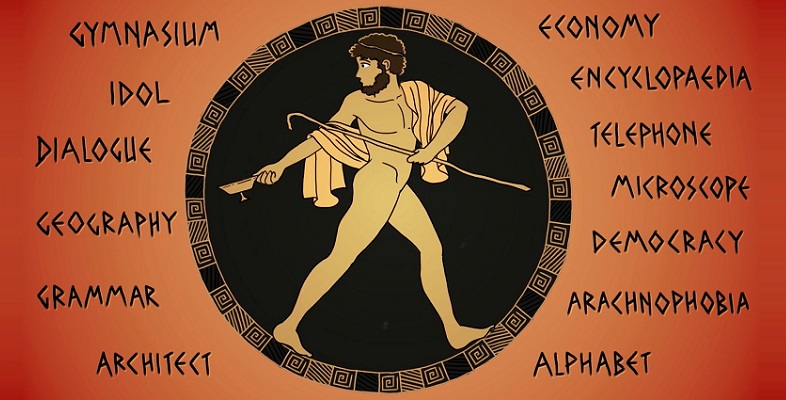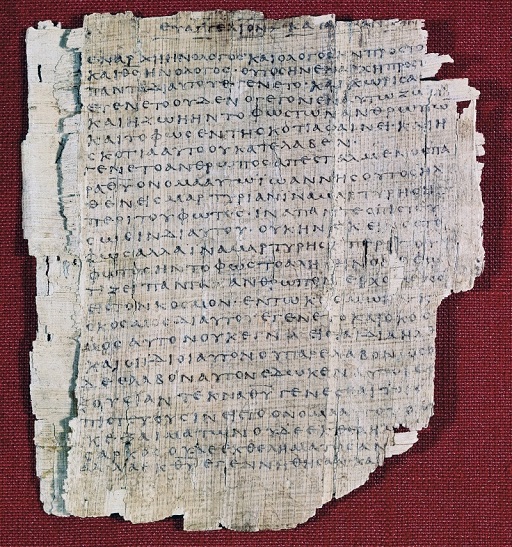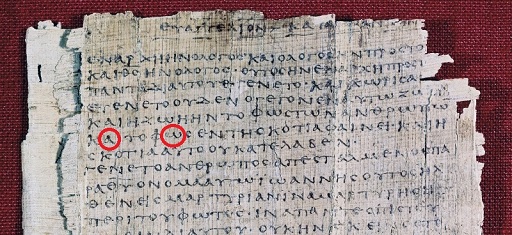6.2 Lower case
Lower case or ‘minuscule’ letters did not become standard until long after the end of the ancient world. It was only in the ninth century CE that Byzantine scribes began to use them regularly when making copies of books, adapting a system that was already in use for documents.
The image shows one page from a complete manuscript of the Gospel of St. John. Its date is disputed, but 200 CE has been suggested, which would make it unusually old. It was discovered in Egypt, where the dry climate is well suited to the preservation of papyrus. The Nile is the source of the reed, Cytherus papyrus, from which papyrus was manufactured.
Activity 7 Reading the papyrus
Reading papyri is a specialist skill which even experienced readers of Greek find tricky. But, based on your knowledge of the alphabet, you might be able to pick out some letters and even words.
Can you find the following?
(a) καί (‘and’) at the beginning of lines 5 and 6 (and also line 2)
(b) the famous opening words in line 1:
ἐν ἀρχῇ ἦν ὁ λόγος
in the beginning (ἐν ἀρχῇ) was (ἦν) the word (ὁ λόγος)
What is your overall impression of the letter forms, in comparison with the Priene inscription? Are there any obvious differences?
Discussion
The curved, flowing strokes typical of handwriting with a reed pen and ink produce a different style of lettering from the straight, chiselled forms on the inscription. On the papyrus you can also see hints of eventual lower case or ‘minuscule’ shapes, for instance, alpha and omega. See, for example, the second and seventh letters on line 6.


